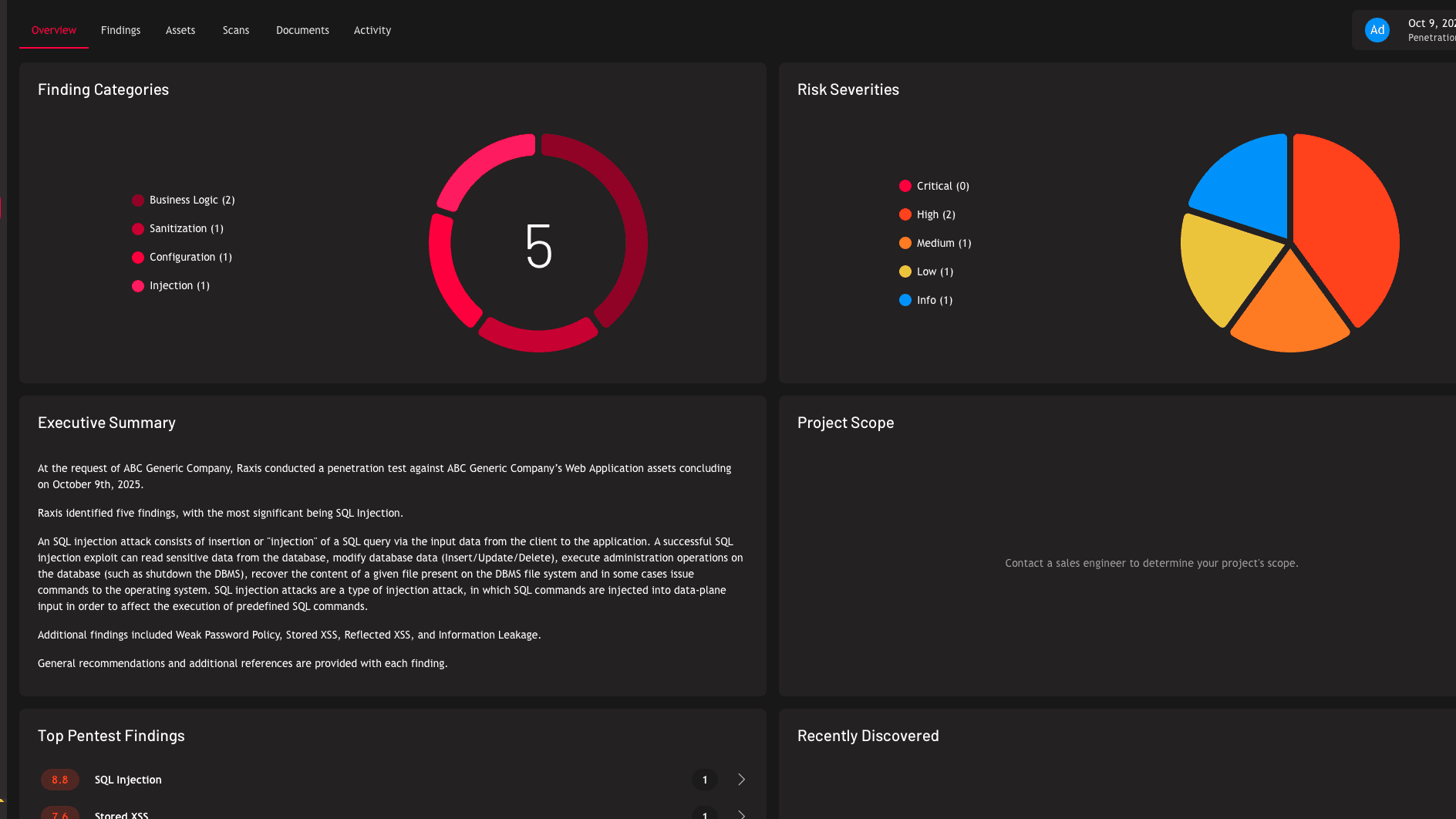Customized Testing Scenarios
Raxis provides tailored penetration testing for financial institutions, ensuring strong network segmentation, regulatory compliance, and protection of sensitive financial data through expert-driven assessments.
Audit Approved Methodology
Unlike competitors who rely solely on automated scans, our approach remains compliant, as we provide proof-of-concept exploits and follow the NIST SP 800-115.
Compliance Requirements
Financial institutions must meet strict regulations including PCI DSS, AML/BSA, GDPR, GLBA, and the NYDFS Cybersecurity Regulation — each requiring strong controls to protect data, ensure privacy, and prevent financial crime.
Protecting Financial Systems, Safeguarding Data, and Ensuring Compliance
The financial sector is the top target for cyberattacks, with criminals exploiting sensitive data and financial systems. In 2023, finance accounted for 27% of all global breaches—more than any other industry—with over 3,300 incidents reported.
Raxis Hack Stories
One Simple Misstep
Our stories are based on real events encountered by Raxis engineers; however, some details have been altered or omitted to protect our customers’ identities.
Our customer, a security-minded regional bank that had performed annual penetration tests for years, was confident that they had crossed all their t’s and dotted all their i’s in remediating previous tests. But, with a lot of employees, critical projects, and moving parts, they understood that frequent pentesting was critical. The Raxis Strike Team examined the internal network remotely using Raxis Transporter and found that many common points of entry — from default system credentials to broadcast relay attacks — achieved no useful results. Relentlessly scrutinizing the network for anything questionable or unusual, the team discovered what appeared to be a large file share labeled as a backup.
Taking a closer look, our team discovered that the file share housed a recent backup of a large shared company file structure. They split up the directories looking for useful files. The team first discovered sensitive HR files that listed employee PII such as SSNs, names, and addresses. Next they found sensitive communications that included customer PII and financial data. And finally, our team discovered an innocuous-looking Excel file buried deep within an IT employee’s personal share.
Intrigued, our team bypassed the simple encryption on the password-protected file. To their surprise, the file contained a goldmine of information – a meticulously maintained list of internal system passwords, including those for critical banking applications. It seemed an overzealous IT administrator had created this file as a personal reference, unwittingly introducing a severe security vulnerability.
With newfound access, our team methodically worked their way through the bank’s internal systems, documenting vulnerabilities and potential attack vectors along the way. The forgotten open file share backup proved to be the key that unlocked the entire network, allowing Raxis to demonstrate the real-world risks the bank faced.
